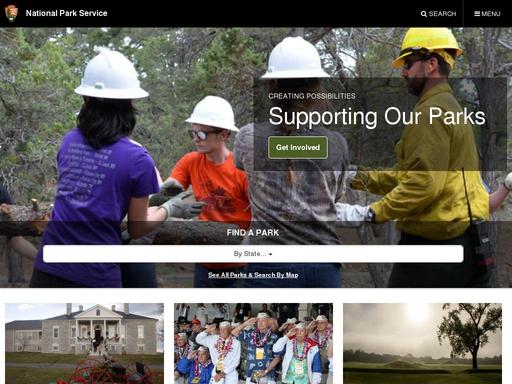Rate Fossil Butte National Monument
Learn and Explore
Since 1916, the National Park Service has been entrusted with the care of our national parks. With the help of volunteers and partners, we safeguard these special places and share their stories with more than 275 million visitors every year. But our work doesn’t stop there.
We are proud that tribes, local governments, nonprofit organizations, businesses, and individual citizens ask for our help in revitalizing their communities, preserving local history, celebrating local heritage, and creating close to home opportunities for kids and families to get outside, be active, and have fun.
Taking care of the national parks and helping Americans take care of their communities is a job we love, and we need—and welcome—your help and support.
Our Mission
The National Park Service preserves unimpaired the natural and cultural resources and values of the National Park System for the enjoyment, education, and inspiration of this and future generations. The Park Service cooperates with partners to extend the benefits of natural and cultural resource conservation and outdoor recreation throughout this country and the world.
Frequently Asked Questions
How do I obtain a park entrance pass?
Only 118 of your 417 park sites charge entrance fees. You can obtain park entrance passes by visiting a park site that charges an entrance fee. Entrance fee sites have passes available; we recommend calling a park prior to your visit. (See the park search to locate a specific park.) There are a number of entrance passes available, including park-specific passes as well as passes that offer entrance to more than 2,000 federal recreation sites in addition to the national parks (Annual, Military, Senior, 4th Grade, Access, and Volunteer passes). Learn more about the America the Beautiful – The National Parks and Federal Recreational Lands Pass.
About this location:
National Monument
Operating Hours & Seasons
Fossil Butte National Monument
Visitors may enter the park at any time, but visitor services and motor vehicle access vary throughout the year. Camping is not available.
Standard Hours
- Sunday:Open 24 hours
- Monday:Open 24 hours
- Tuesday:Open 24 hours
- Wednesday:Open 24 hours
- Thursday:Open 24 hours
- Friday:Open 24 hours
- Saturday:Open 24 hours
Fees & Passes
Entrance Fees:
- $0.00 – Fossil Butte Entrance Fee
Free
About
America’s Aquarium in Stone
Some of the world’s best preserved fossils are found in the flat-topped ridges of southwestern Wyoming’s cold sagebrush desert. Fossilized fishes, insects, plants, reptiles, birds, and mammals are exceptional for their abundance, variety, and detail of preservation. Most remarkable is the story they tell of ancient life in a subtropical landscape.
Directions
By car: Travel 9 miles west of Kemmerer, Wyoming on U.S. Highway 30. There is a highway sign near mile post 44; turn right onto Lincoln County Road 300. The Historic Quarry Trail is approximately 1/2 mile on the right. Continue west on County Road 300 for approximately 3 miles to Chicken Creek Road which provides access to the visitor center, scenic drive, Nature Trail and picnic area. Closest airports: Rock Springs, Wyoming (130 miles); Salt Lake City, Utah (150 miles)
Visitor Centers
Fossil Butte Visitor Center
Over 300 fossils are on exhibit. Video programs feature what scientists have learned from the fossils and the rocks they’re found in, and how fossils are excavated and prepared. Visitor Center hours vary by the season.
Weather
Expect a variety of weather conditions no matter what time of year you visit. Spring, fall and winter can be very cold; expect snow and winter conditions. Spring: Day time temperatures usually range from 30 F to 65 F Summer: Day time temperatures range from 60 F to 90 F Fall: Day time temperatures range from 45 F to 70 F Winter: Day time temperatures range from -20 F to 30 F








